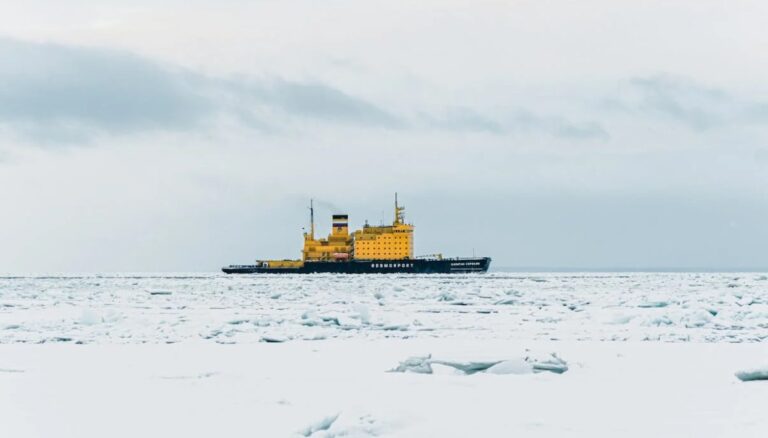Ship traffic in the Arctic Ocean has increased significantly over the past decade, according to a new report from the Arctic Council’s Working Group on the Protection of the Arctic Marine Environment.
In fact, the number of vessels passing through the region grew by almost 40 percent between 2013 and 2023, from 1,298 vessels per year to 1,782. The largest single category of vessels are fishing vessels, followed by cargo and bulk carriers (dedicated to the transport of non-liquid products).
Table of Contents
The role of natural resources
According to Hjalti Hreinsson, who participated in the drafting of the report as project manager of the Working Group, there are several factors that have contributed to the growth of maritime transport in the Arctic.
“One of these, perhaps the most important, is the increase in the extraction of natural resources. Compared to other marine areas of the world, there are not many ships in the Arctic, and the new projects will have a strong impact on the statistics.”
The study, in fact, focuses on large mining projects carried out, one in the Canadian Arctic, and the other in the Russian Arctic. These are respectively the Mary River mine, in the territory of Nunavut, where iron ore is extracted. And the Yamal LNG plant, on the homonymous peninsula in northwestern Siberia, dedicated to liquefied gas.
Longer trips in the Russian Arctic
In addition to the number of ships, the length of Arctic voyages has also increased. Over the past decade the total distance traveled by all vessels in the region has more than doubled, from 6.1 million nautical miles to 12.9 millions.
The area that has recorded the most significant growth is that of the Russian Arctic, due to the aforementioned Yamal LNG (Novatek manages it) but also Gazprom’s Arctic Gate and Prirazlomnoye oil projects and Lukoil’s Varandey terminal.
Trade on the Northern Sea Route is growing
The volumes of cargoes passing through the so-called “Northern Sea Route” grew more than thirteen times from 2013 to 2023, going from 2.8 million tonnes to 36.3 million.
Russia believes that the Northern Sea Route – which runs from Murmansk, near the border with Norway, to the Bering Strait, near US Alaska – could become an alternative to the Suez Canal.
Although the crossing is difficult due to frozen waters, especially in winter, the Arctic route would allow Moscow not only to reduce maritime transport times to Asia. But also to free itself from “bottlenecks” and ports below the control of Western powers, given the deterioration of relations with Europe and the United States following the invasion of Ukraine.
At the moment, however, it is not possible to predict whether Russia will be able to overcome logistical difficulties and make the Northern Sea Route a convenient route for oil and liquefied gas exports to China and the rest of Asia.
Russia dominates maritime transport in the Arctic
The specialized site gCaptain reports that, if the flag of the vessels sailing in the region is taken into account, Russia has a dominant position in maritime transport for the Arctic.
In 2022, out of a total of 1661 vessels, those flying the Russian flag were 885, followed by Norwegian (180) and Danish (122).
The Russian presence in the waters of the High North could further increase – excluding the availability of icebreakers – with the entry into operation, scheduled for 2024, of Rosneft’s Vostok oil project.
Read also: Why the Houthi attacks in the Suez Canal pose risk of global commercial chaos












